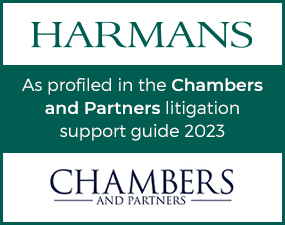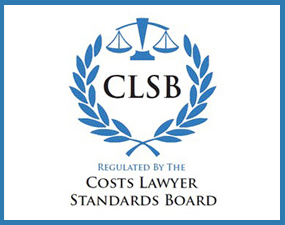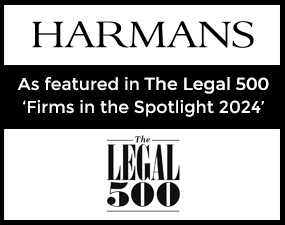Security for Costs Applications and ATE funding
Premier Motorauctions Ltd (in liquidation) and Premier Motorauctions Leeds Ltd (in liquidation) -v- PricewaterhouseCoopers LLP and Lloyds Bank Plc [2016] EWHC 2610 (Ch)
In a decision handed down on 24 October 2016, the High Court confirmed that ATE insurance can be sufficient to successfully resist an application for security for costs, even in circumstances where a claimant company is insolvent.
This is a decision which should offer some welcome reassurance to impecunious Claimants who may have previously had their claims stifled by an inability to satisfy an order for security for costs.
In Premier Motorauctions Ltd (in liquidation) and Premier Motorauctions Leeds Ltd (in liquidation) (the “Companies”) -v- PricewaterhouseCoopers LLP and Lloyds Bank Plc (the “Defendants”), the Defendants pursued applications for security for costs, despite the fact that the Companies, via their liquidators, had put in place £5m of adverse costs cover underwritten by a syndicate of ATE Insurers in a deal brokered by litigation funding and insurance specialists, TheJudge.
Applications for security were made by both Defendants soon after the pleadings stage of proceedings closed, relying upon the impecunious company condition prescribed by CPRr25.13(2)(c) (‘the claimant is a company…and there is reason to believe that it will be unable to pay the defendant’s costs if ordered to do so”).
Although the claimants had taken out ATE insurance to cover the defendants’ anticipated reasonable costs, the defendants contended that the policies were not sufficient security principally because they could be avoided by the insurers in certain circumstances, and therefore contended that a Deed of Indemnity was required instead.
They specifically identified that they intended to put the credibility of a key witness at the heart of their Defence and that, should that Defence succeed on that basis, it would create a scenario which would entitle the ATE insurers to avoid the policies on the basis of misrepresentation.
Having considered the arguments, the Court concluded that that the Defendants had failed to satisfy one of the key requirements of CPR 25.13 – that the Companies will be unable to pay the defendant’s costs if ordered to do so – and refused the Defendants’ applications for security of costs.
Snowden J rejected the defendants’ contentions, and approved and applied a line of authority concerning the effectiveness of ATE policies as security, which can be traced back to the decision of Stuart-Smith J in Geophysical v Dowell [2013] EWHC 147, the effect of which was to consider whether the risk of avoidance was anything more than theoretical.
Where the risk was no more than theoretical, the jurisdictional threshold for security could not be satisfied, because (applying the test as illuminated by the decision of the Court of Appeal in Sarpd Oil) there was no reason to believe that a claimant will be unable to pay costs if ordered to do so.
The fact that a claimant company is in liquidation is not, in itself, sufficient to satisfy the jurisdictional threshold in circumstances where the company has valid ATE cover where the risk of avoidance is no more than theoretical. The question is not whether ATE insurance provides as good a security as traditional forms of ‘copper-bottomed” security, but ‘whether, having regard to the terms of the ATE policy in question, the nature of the allegations in the case and all the other circumstances, there is reason to believe that the ATE policy will not respond so as to enable the defendant’s costs to be paid”.
In the circumstances of the case, the court was not persuaded that the risk of avoidance was such that the jurisdictional threshold had been crossed, and therefore dismissed the applications.
This decision appeared to underline the importance of obtaining independent, professional advice on litigation financing in that the Court had particular regard to the fact that the ATE policies; (1) had been taken out by Liquidators acting in their capacity as independent professional insolvency office-holders; (2) that they had arranged the ATE policies after having conducted an investigation into the claims with the assistance of an experienced legal team; (3) that the ATE insurance market was now a substantial and mature market in which insurers are unlikely to have a commercial incentive in seeking to avoid liabilities under policies they issue.
This decision is a further shot in the arm for access to justice following the High Court ruling in Essar Oilfields Services Limited v Norscot Rig Management PVT Limited which upheld the decision of arbitrator Sir Phillip Otton to allow the recovery inter-partes of a success fee paid by the claimant to a third party funder who had financed their ICC arbitration, which was another landmark decision on a case brokered by TheJudge.
Even aside from the key issue of the adequacy of the security provided by ATE policies, the Judgment considered a number of other interesting issues from an insolvency or professional officeholder context:
The personal liability of officeholders
It is interesting to note that the positive view that Mr. Justice Snowden took of the fact that the ATE policy had been taken out by an independent professional insolvency officeholder was underpinned by a reiteration that the officeholders had every interest in ensuring that the ATE policies were fit for purpose and would respond as any failure of the ATE policies to respond would leave the officeholder with a “significant prospect” of the Defendants applying for a costs order against them personally under section 51 of the Senior Courts Act 1981.
The attribution of the knowledge of former directors and associated parties of the insolvency company
In making the application, the Defendants sought to suggest that the ATE policies were at a greater risk of being avoided because of the argument that the knowledge of the former Director should be attributed to the Company (and thus the professional officeholder).
The view of the Court was that such arguments were “extremely weak” and that the policy underlying the attribution rule in cases of ATE policies must recognise that insolvency officeholders come to an insolvent company as strangers and that they frequently encounter a lack of co-operation or candour from the former Directors or associated parties of the insolvency company.
It was considered that any attribution of the knowledge or actions of the former Directors and associated parties of the insolvent company to the officeholder would entirely defeat the commercial purpose for which the policy was taken out in the first place.
Conclusion
In considering some of the key issues connecting the ATE insurance market and the position of an officeholder, this Judgment provides a welcome and timely boost to access to justice.
However, it also underlines the importance of engaging an experienced and professional team to advise and source litigation financing options that are appropriate and suitable for the specific facts of each individual claim.



